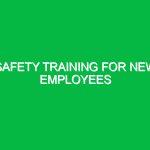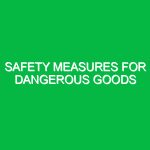Introduction to Health and Safety Policy Development
In today’s fast-paced and often unpredictable work environments, the significance of effective Health and Safety Policy Development cannot be overstated. This process is integral to the Health, Safety, and Environment (HSE) domain, ensuring that organizations not only comply with legal standards but also foster a culture of safety among employees. Simply put, a well-structured health and safety policy outlines an organization’s commitment to protecting its workers, the public, and the environment from potential hazards.
Imagine a construction site bustling with activity. Workers maneuver heavy machinery, climb scaffolding, and handle hazardous materials. Without a robust health and safety policy in place, the risk of accidents and injuries skyrockets. Conversely, a strong policy can significantly reduce these risks, providing a safer workplace for everyone involved. In this article, we will explore the intricacies of Health and Safety Policy Development, the associated hazards and risks, best practices for ensuring safety, and the regulations that govern this essential area.
Understanding Hazards and Risks in Health and Safety Policy Development
To effectively develop a health and safety policy, organizations must first identify and understand the various hazards that can arise in the workplace. Hazards can be categorized as physical, chemical, biological, ergonomic, and psychosocial. Let’s delve deeper into each category.
Physical Hazards
Physical hazards encompass environmental factors that can cause harm. These include slips, trips, falls, and exposure to machinery. For instance, a manufacturing facility may have moving parts that pose a risk to employees if proper safeguards are not implemented. A real-life example involves a factory worker who suffered an injury due to inadequate machine guards. This incident underscores the necessity of identifying physical hazards and implementing preventive measures.
Chemical Hazards
Chemical hazards arise from exposure to harmful substances, whether they are in the form of liquids, solids, or gases. In a laboratory setting, for example, improper handling of chemicals can lead to spills or reactions that endanger staff. The tragic incident at a chemical plant in Bhopal, India, serves as a sobering reminder of the potential consequences of neglecting chemical safety protocols. Developing comprehensive safety guidelines for handling and storing chemicals is vital.
Biological Hazards
Biological hazards include exposure to harmful microorganisms such as bacteria, viruses, and fungi. In healthcare settings, for example, workers may face risks from bloodborne pathogens. A personal experience from a healthcare professional illustrates the importance of proper training and equipment when dealing with such hazards. They recounted a time when a lack of personal protective equipment (PPE) led to a near-miss incident. This highlights the need for robust policies surrounding biological safety.
Ergonomic Hazards
Ergonomic hazards relate to the physical strain placed on workers due to poor posture, repetitive movements, or inadequate workspace design. For example, an office worker who spends hours typing without proper ergonomic support may develop musculoskeletal disorders over time. Companies need to assess workplace ergonomics and implement changes that promote employee well-being.
Psychosocial Hazards
Psychosocial hazards stem from work-related stress, harassment, or violence. While these may not be as immediately visible as physical hazards, their impact on employee mental health can be profound. A study from the World Health Organization indicates that workplaces with supportive mental health policies see lower absenteeism and higher productivity. Addressing psychosocial hazards is as crucial as tackling physical risks.
Best Practices for Health and Safety Policy Development
Now that we understand the various hazards, it’s time to consider best practices for developing an effective health and safety policy. These best practices should be actionable, relevant, and adaptable to the specific needs of an organization.
Conducting a Thorough Risk Assessment
At the core of Health and Safety Policy Development is a comprehensive risk assessment. This process involves identifying potential hazards, evaluating the risks associated with them, and determining appropriate control measures. Engaging employees in this process can provide invaluable insights and foster a sense of ownership. For instance, in a manufacturing plant, workers can offer firsthand accounts of near misses that may not be immediately apparent to management.
Engaging Employees in Policy Development
Employee engagement is vital in creating a culture of safety. When employees feel involved in the development of health and safety policies, they are more likely to adhere to them. Workshops and focus groups can be effective tools for gathering input and fostering collaboration. A case study from a major corporation showed that involving employees in safety committees led to a 30% reduction in workplace accidents over two years.
Training and Education
Training is essential for ensuring that employees understand the policies in place and their roles in maintaining safety. Regular training sessions should cover hazard recognition, emergency procedures, and the proper use of PPE. For instance, a construction company that invests in ongoing safety training not only protects its workers but also enhances its reputation and reduces liability.
Establishing Clear Communication Channels
Effective communication is crucial in the realm of health and safety. Organizations should establish clear protocols for reporting hazards, near misses, and incidents. This can include anonymous reporting systems that encourage employees to speak up without fear of retribution. An example from the oil and gas industry illustrates this point: companies that prioritize open communication about safety concerns tend to have lower incident rates.
Regular Policy Review and Updates
Health and safety policies should not be static. Regular reviews are necessary to ensure that they remain relevant in a changing workplace. This includes incorporating new regulations, addressing emerging hazards, and integrating feedback from employees. A proactive approach to policy review can prevent complacency and reinforce the organization’s commitment to safety.
Regulations and Standards Governing Health and Safety Policy Development
In addition to best practices, organizations must navigate a complex landscape of regulations and standards that govern health and safety. These regulations vary by country and industry, but there are some common standards that organizations should be aware of.
Occupational Safety and Health Administration (OSHA)
In the United States, the Occupational Safety and Health Administration (OSHA) sets forth regulations that employers must follow to ensure workplace safety. OSHA’s guidelines cover a wide range of industries and provide frameworks for hazard communication, emergency preparedness, and more. Organizations must familiarize themselves with these regulations and ensure that their health and safety policies align with them.
International Organization for Standardization (ISO) Standards
ISO standards, such as ISO 45001, provide a framework for organizations to manage occupational health and safety risks. These standards emphasize the importance of leadership commitment, worker participation, and continuous improvement. Companies seeking to enhance their safety management systems can benefit from integrating ISO standards into their health and safety policies.
Local and Industry-Specific Regulations
Each industry may have specific safety regulations that must be adhered to. For instance, the construction industry is subject to additional regulations regarding scaffolding, fall protection, and equipment safety. Organizations must stay informed about these industry-specific regulations to ensure compliance and safeguard their workforce. Consulting with legal experts or industry associations can be beneficial in this regard.
Conclusion: The Path Forward in Health and Safety Policy Development
Health and Safety Policy Development is not merely a regulatory obligation; it is a fundamental aspect of fostering a safe and productive work environment. By understanding the various hazards, adopting best practices, and adhering to regulations, organizations can create robust health and safety policies that protect employees and promote well-being.
As workplaces continue to evolve, so too must our approaches to health and safety. Organizations that prioritize this development will not only reduce risks but also enhance employee morale, productivity, and overall organizational resilience. Investing in health and safety is not just about compliance; it is about cultivating a culture of care and responsibility that benefits everyone involved.


